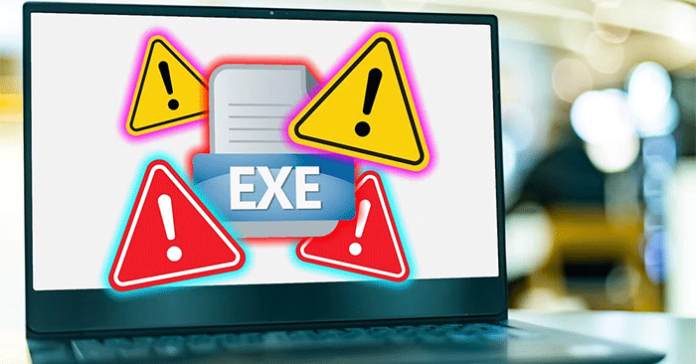Cybercriminals often use malicious EXE files to spread malware, ransomware or spyware. That's why you should be able to recognize and avoid potentially harmful files to protect your device from infection. If you suspect a file may be unsafe, there are several ways to check the file before using it.
1. Check file name, extension, size and source
Examining key file properties can help you identify potentially harmful EXE files. Start by checking the file name and extension. If the file has a generic name like “install.exe” or “update.exe” instead of the expected name, or if the file uses a double extension (for example, “file.pdf.exe”), it may be a warning sign.
File size can also be an indicator. Files that are unusually small in size or too large compared to the desired program's normal size may be malicious files. To reduce the risk of infection, always download files from official sources and avoid executable files received via unwanted emails or social network links.
2. Run the file through anti-virus software
If you try to open or download an EXE file and your antivirus software gives you a warning, take that warning seriously. Instead of downloading immediately, run a specific file scan with Microsoft Defender. If you are using third-party antivirus software, right-click on the file and select the option to scan with your installed program.

If the scan marks the file as suspicious or malicious, delete the file immediately to protect your system. Never run a suspicious file “just to see” if it is safe; this can lead to data theft, malware, and other security issues. Also, turn on your antivirus software to receive immediate alerts if any potentially harmful files enter your computer.
Although Windows Defender usually detects threats and automatically warns you, it is recommended to install third-party antivirus software on your system for added protection.
3. Analyze files with VirusTotal
If you want to check if an executable file is malicious without downloading it, try using VirusTotal. This online tool scans files and URLs using multiple antivirus engines and databases to provide detailed reports on potential threats. This can prevent you from downloading a potentially harmful EXE file.

To use this tool:
- Visit VirusTotal.
- Select tabs URLpaste the URL where the file is stored and press Enter. VirusTotal will then display results from multiple antivirus tools.
If a threat is detected, avoid downloading the file. If you have downloaded it, you can also upload the file directly to VirusTotal to scan for malware.
4. Check digital signature
You can also verify the authenticity of an EXE file by checking its digital signature. This is essentially a “seal” from the software publisher, certifying that the file has not been changed since it was signed. You must be cautious if the file does not have a digital signature or lists an unwanted publisher.

To view digital signature:
- Right click on the EXE file and select Properties.
- Go to tab Digital Signatures. Select signature, click Detailsthen enter View Certificate to check the issuer.
If it shows a trusted publisher, go to the tab Certification Path to confirm there is a “This Certificate Is OK” message there.
5. Make sure the Windows SmartScreen Protection feature is enabled
Windows SmartScreen is a built-in security feature that checks files and applications against a threat database, alerting you to potential risks when handling suspicious files or applications on your computer. . Although this feature is usually enabled by default on Windows 10/11, you must double-check whether the SmartScreen filter is enabled or not.
To verify SmartScreen is enabled:
- Right click on the Start button and open Settings.
- Then navigate to Privacy & Security > Windows Security > Apps & browser controlthen click Reputation-based protection settings.
- Make sure all 4 filters are turned on, especially the filter Check apps and files.

That's how you can identify malicious EXE files. If you use official sources and follow the steps above, you can easily detect suspicious files and help keep your computer safe.


